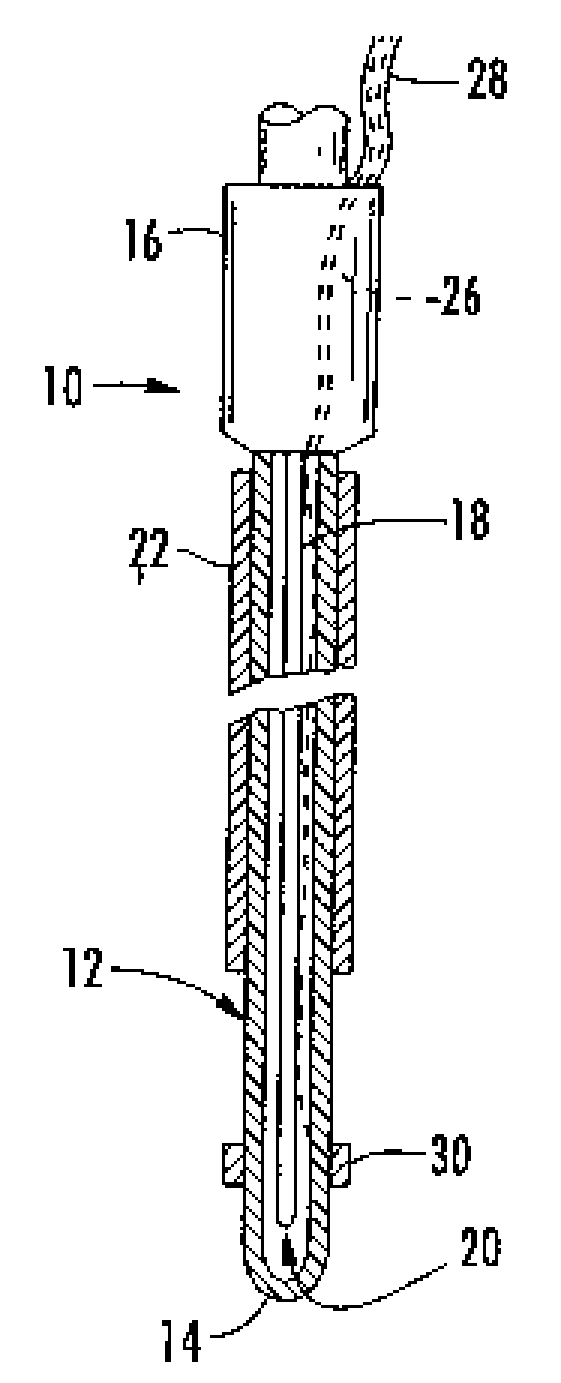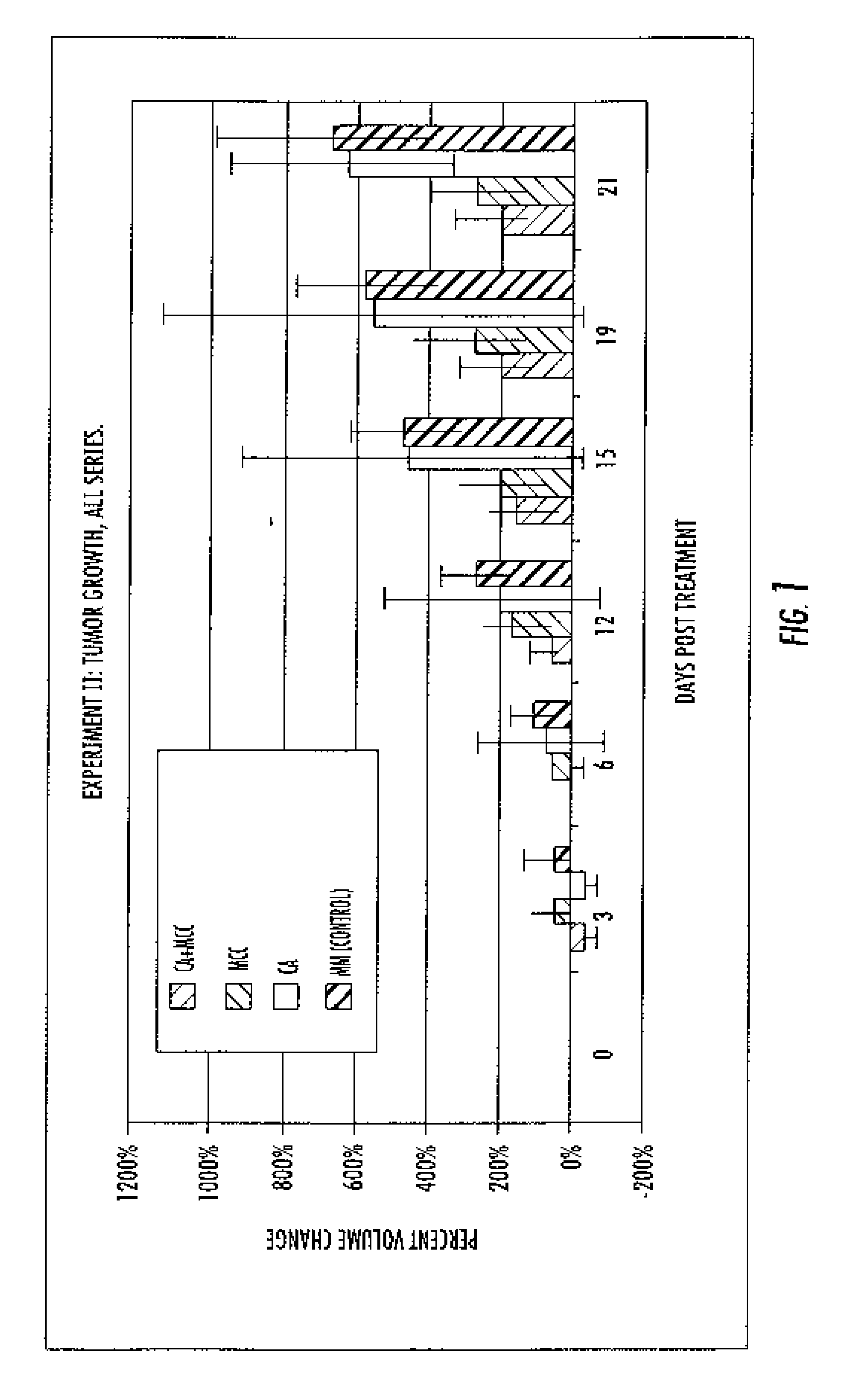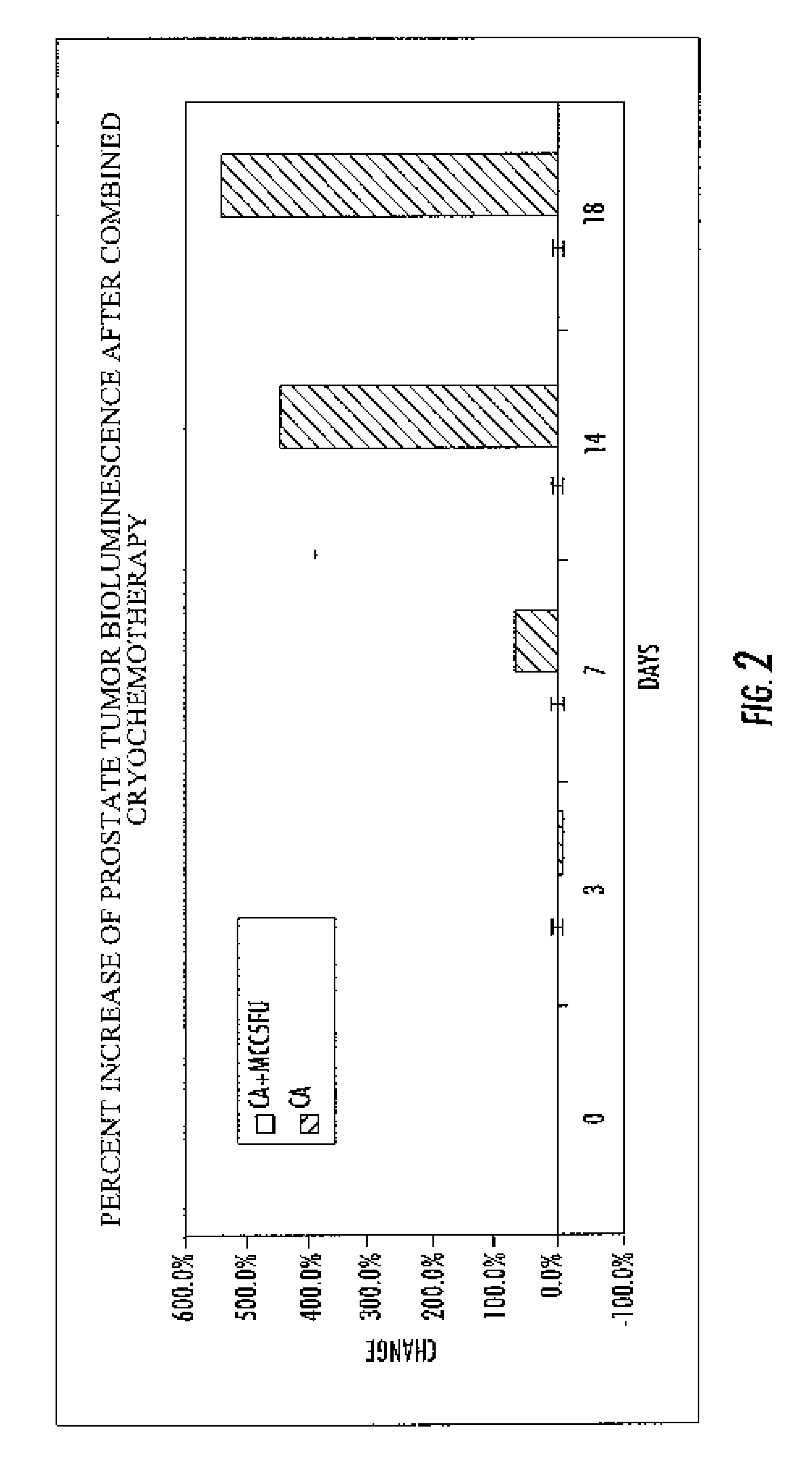Systems and methods for improving image-guided tissue ablation
- Summary
- Abstract
- Description
- Claims
- Application Information
AI Technical Summary
Benefits of technology
Problems solved by technology
Method used
Image
Examples
Embodiment Construction
[0034]This invention incorporates and improves on the subject matter of several patents: e.g., U.S. Pat. No. 6,255,018 for monitoring cryosurgery; U.S. Pat. No. 5,425,370 that oscillates the delivery device(s) at its resonant frequency; and U.S. Pat. No. 5,827,531 that discloses the unique microcapsules. All of these patents are incorporated herein by reference. The patent material is summarized below for a clear understanding of the objects and advantages of the present invention.
[0035]The computer-aided monitoring method disclosed in U.S. Pat. No. 6,235,018 predicts, in real-time, the extent of the ice ball kill zone, and, alone, or in conjunction with conventional imaging techniques, such as, Ultrasound, “US”, Computerized Tomography, “CT”, Magnetic Resonance, “MR” allows a precise location of the target regions for complementary treatment with unique imageable drug(s) carriers.
[0036]The imageable drug(s) carriers of this invention are unique microcapsules. The new microcapsules ...
PUM
| Property | Measurement | Unit |
|---|---|---|
| Temperature | aaaaa | aaaaa |
| Temperature | aaaaa | aaaaa |
| Temperature | aaaaa | aaaaa |
Abstract
Description
Claims
Application Information
 Login to View More
Login to View More - R&D
- Intellectual Property
- Life Sciences
- Materials
- Tech Scout
- Unparalleled Data Quality
- Higher Quality Content
- 60% Fewer Hallucinations
Browse by: Latest US Patents, China's latest patents, Technical Efficacy Thesaurus, Application Domain, Technology Topic, Popular Technical Reports.
© 2025 PatSnap. All rights reserved.Legal|Privacy policy|Modern Slavery Act Transparency Statement|Sitemap|About US| Contact US: help@patsnap.com



